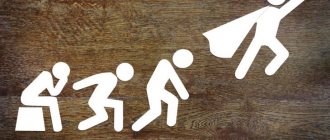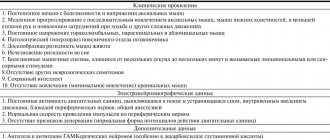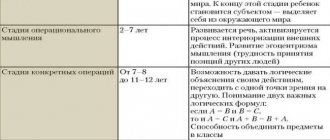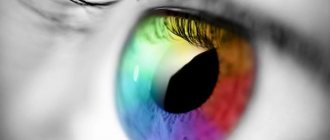Types of thinking and their characteristics: Unsplash Thinking is the most important ability of people. Thanks to him, a person learns about the world, gains experience, and plans for the future. Thinking arises as a result of practical and mental activity and comes in several types.
What types of thinking are there? Doctor of Psychological Sciences Robert Nemov divides thinking into theoretical and practical. In theoretical thinking, types such as conceptual and figurative thinking are distinguished, and in practical thinking, visual-figurative and visual-effective thinking are distinguished.
Visual-figurative thinking is a type of thinking characterized by reliance on ideas and images.
The functions of figurative thinking are associated with the representation of situations and changes in them that a person wants to obtain as a result of his activities that transform the situation.
A very important feature of imaginative thinking is the establishment of unusual, incredible combinations of objects and their properties. Speech is actively involved in visual-figurative thinking, which helps to name the sign and compare the signs.
Those. Visual-figurative thinking helps solve tasks mentally, without the participation of practical actions. The right hemisphere of the brain is responsible for this type of thinking.
Examples from life of some types of thinking
Example. The surgeon tells the nurse to sew. One word, but she already knows which tool to use, how to process it, and can even give advice if she sees something dangerous. In such a tandem, professional thinking is developed - she does not have a higher education, but she has experience, knowledge, intuition, and logic.
Several types are included here: in addition to professional, verbal-logical, practical, analytical, logical or intuitive, arbitrary.
Example. A guy wants to meet a girl, but right in front of her nose the waiter accidentally stains his coffee. The guy was taken aback and couldn’t do anything else but mumble: “It wasn’t necessary...”
But the acquaintance did not take place not because of coffee stains on the shirt. And because of the irrational thinking that entered the battle: “She will think that I am a mattress,” “She definitely thought that there was something wrong with me...”, “She will not want to communicate with someone like me.” A person gets bogged down in logically unfounded beliefs, plunges into excitement and panic. Next time it will be more difficult for him to approach and speak first.
Stages of development of a child's thinking
Modern psychologists identify three main stages in the development of a child’s thinking:
- visually effective;
- visual-figurative;
- conceptual (logical) thinking.
Visual and effective thinking is characteristic mainly of children of primary preschool age. However, already in the fourth year, visual-figurative thinking begins to form , and then logical thinking develops.
At the beginning of the preschool period, babies need physical contact with objects. Over time, the need to touch everything with your hands disappears, and children focus on imagining the image in their mind. The visual-figurative way of thinking becomes active and basic by the age of 5-6 years.
But, unfortunately, not all children develop visual-figurative thinking properly. If you see that it is quite difficult for your child to imagine something in his mind, then do not delay, start actively developing this type of thinking. Otherwise, the child will experience difficulties in school. In particular, it will be difficult for him to solve problems , as well as any tasks of a creative nature.
How visually effective thinking develops in preschoolers
Supporting the development of visually effective and imaginative thinking in preschoolers is simple: the key goal of parents is not to interfere with the dismantling or “modernization” of objects. The only limitation is security measures. Materials should be as harmless as possible for younger preschoolers.
Object actions do not immediately lead the child to understand the main features and purpose of the object. It takes time and repeated manipulations for the child’s mind to grasp visual generalizations and build the necessary connections.
For example, if a preschooler made his first attempts to draw with a pencil, then when he sees colored crayons he will not imagine their purpose without preliminary tests.
It is especially effective to form the memory of images with the help of flowing and bulk materials. The child pours sand from hand to hand, makes slides from cereals, and pours water. Constant touching allows him to first determine and then remember that if the sand is properly crushed, it will turn out to be a Easter cake.
To summarize what has been said, the basic principle of the development of this form of thought process is expressed in repeated actions leading to the same result: a picture, an assembled toy, a sculpted figurine.
This is how the first ideas about specific objects and life experience arise, which lay the foundation for the development of mental forms.
How to develop visual-figurative thinking?
In this case, various games and exercises will come to the rescue.
The most effective way to develop visual-figurative thinking is activity that allows you to translate your plans into reality. For kids, this is, first of all, any types of construction and all kinds of didactic games aimed at developing thinking and imagination. Let us consider in more detail the techniques that promote the development of imaginative thinking.
The formation and development of visual-figurative thinking is facilitated by:
- passing labyrinths;
- tangram game;
- unfinished drawings;
- solving a Rubik's cube;
- tasks to find absurdities;
- solving puzzles and riddles;
- tasks to find and restore the missing element;
- design;
- exercises to develop interhemispheric connections;
- reading with further analysis of the characters of the main characters;
- exercises aimed at developing creative imagination;
- comparison exercises, search for differences;
- using games with rearranging sticks (matches);
- solving droodles;
- compiling stories or fairy tales based on a given beginning, or, conversely, inventing the ending of a story;
- describing an object from memory;
- retelling what you read;
- exercises with inventing associations.
Remember how in the poem by Yu. Moritz “What is it like?”
A willow is rustling on the mountain, A bee is ringing on a willow, Striped like a zebra.
Sometimes water fills our boat, A star swims in the depths, Silver like a fish.
There are maples and oaks in the grove, And under them there are mushrooms, Each mushroom looks like an umbrella.
A young month has come out, The sky seems like water, A cloud seems like a wave , The moon looks like a wooden boat.
How similar everything is! So, I probably look like someone too!
I went and shouted to the goats, ducks, sheep and dragonflies: - Who do I look like?
The white goat turned, smiled like a goat, and said like a human: “Don’t you see for yourself?”
You are kinder than a calf, More cheerful than a kid, You are still just a child, But you look like a person!
Thus, the ability to imagine objects in the mind, move them, and perform various manipulations are the most important means of developing a child’s abilities and his mental activity. Developed visual-figurative thinking can be compared to the foundation of all mental activity of a child.
Even in the works of Aristotle, the importance of developing this type of thinking was noted. Creating a mental image helps a person to be result-oriented, strive to achieve what is planned, control his own actions and anticipate their consequences. It helps to activate the creative potential inherent in every person. Anyone who has developed visual-figurative thinking is able to think and remember information much faster.
Therefore, even in preschool age, it is necessary to develop the child’s visual and figurative thinking using the above techniques, and you can also train figurative thinking with special exercises.
What is thinking and its functions
Let's start, as always, with a definition.
Thinking is a process of processing information that reflects objective reality subjectively, through concepts, judgments, and conclusions. This is a higher process that is characteristic only of man, his cognitive activity.
Thanks to thinking, we develop, learn something new, and establish connections between objects. For example, we know that wine is a little intoxicating, a car can drive down a hill on its own, rain drums on the roofs, etc.
This higher process helps to understand the essence of the phenomenon: thunder thunders not because it wants to, but because a collision of discharges occurs. Or water boils not because it boils away, but because the temperature has risen. I got a little into physics here











